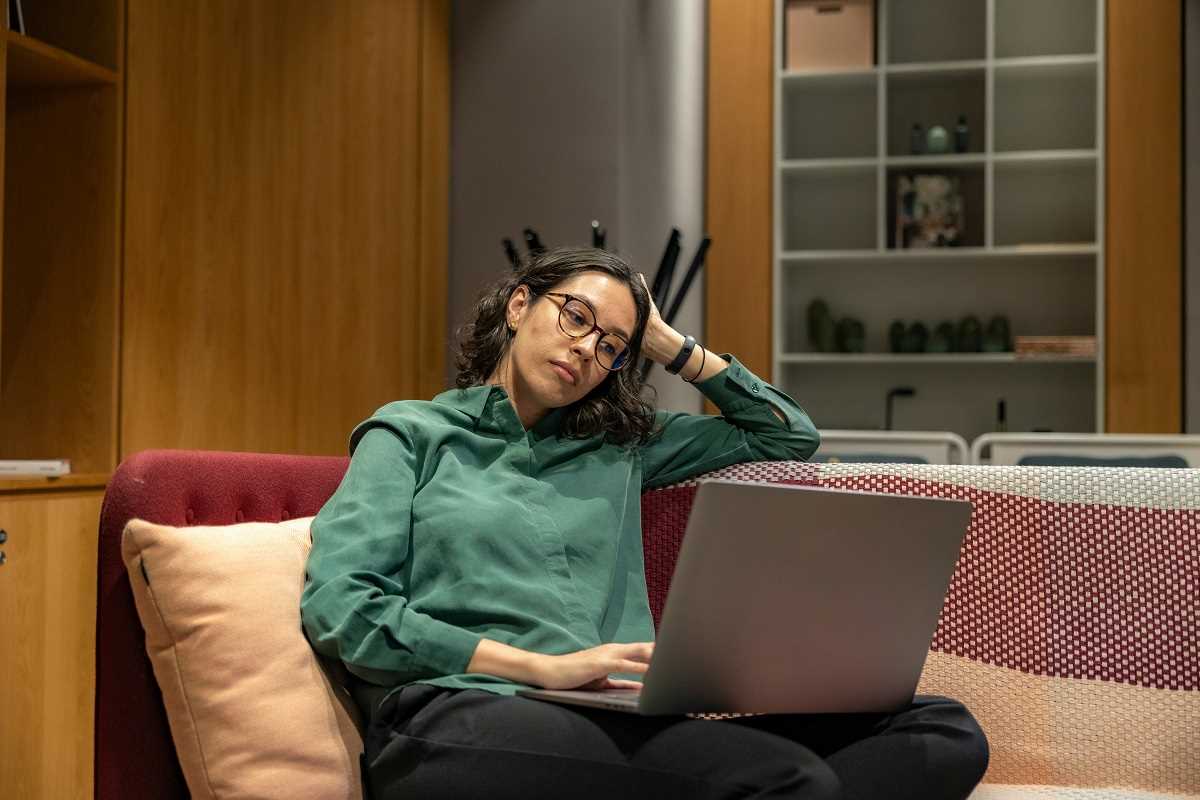Most desks contain more than just office supplies—they help shape how well you concentrate or drift off task. Arranging your workspace so it feels comfortable makes it easier to stay on track and handle assignments without frequent disruptions. Adjusting your monitor or reserving a quiet spot for focused work sends a clear message to those around you about your preferences. When your surroundings match your way of thinking and your need for peace, you’ll find it simpler to make steady progress on your projects. This guide explains how making a few thoughtful changes can help your workspace better support your focus and overall sense of calm.
How Personal Boundaries Affect Your Work
Drawing clear lines around who enters your headspace at work changes more than noise levels. You sharpen your attention by preventing unexpected pop-ins. When you signal that you prefer heads-up check-ins, collaborators learn to approach you at convenient moments. This arrangement reduces stress by giving you time to wrap up thoughts before answering questions. Instead of diving into interruptions, you maintain momentum on creative tasks and critical analyses.
Setting these rules quietly shifts social habits around your desk. Colleagues begin to respect your workflow rhythms without formal policy changes. You gain small windows of uninterrupted focus that add up across the day. Over time, those minutes accumulate into solid blocks where you conquer complex problems, draft polished emails, or brainstorm fresh ideas. By steering office chatter toward scheduled sessions, you reclaim time you didn’t realize you were losing.
Replacing vague open-door signals with simple cues helps everyone understand when you’re in deep work. A folded headset means “do not disturb,” while a raised notebook might stand for “brief questions welcome.” These personalized signs feel friendly yet firm, cutting down spontaneous drop-bys that derail your train of thought. The result? A smoother workflow and a calmer mind that both you and your team will appreciate.
Maximize Peace Through Small Changes
Rearranging a few items on your desktop can clearly communicate your availability. Grouping reference materials in a corner and leaving central space clear creates a visual buffer that discourages unscheduled stops. Color-coding your task list with soft pastels sets a calming tone and distinguishes between urgent versus non-urgent work. You’ll find that even small changes guide collaborators to respect your pace and priorities. After all, they follow cues more than rules.
Adjusting your chair height by just an inch often aligns your posture with better breathing and alertness. A slightly elevated seat opens your diaphragm, supporting sustained attention during long planning sessions. Swapping a high-back chair for one with a low-profile design shows openness while providing enough support. It signals “I’m present but focused,” creating an atmosphere that blends collaboration readiness with personal focus. These micro-tweaks invite calmer interactions without resorting to blunt “do not disturb” signs.
Integrate breaks at fixed times to show your rhythm to coworkers. A quick two-minute stretch alarm indicates you’re stepping away briefly, rather than leaving unexpectedly. Over days, people learn your pattern and redirect questions to those intervals. Such predictability reduces off-schedule interruptions and fosters a shared understanding of when and how to engage with you. You’ll complete more tasks and return to your desk feeling refreshed instead of reset.
Tools and Tactics to Define Your Personal Area
- Desk Shield Marker
- Purpose: Signals your preferred focus zone to teammates.
- Steps:
- Sketch a subtle border with colored tape around your monitor base.
- Add small icons (star, circle) at corners to reinforce the limit.
- Keep markers tidy so they look intentional, not cluttered.
- Cost/Availability: A pack of colored tape costs under $5 and fits most budgets.
- Insider Tip: Choose a pastel shade to reduce visual strain while still conveying separation.
- Noise-Damp Ear Covers
- Purpose: Creates an auditory buffer without complete isolation.
- Steps:
- Slide the covers onto your existing headphones.
- Adjust padding for snug fit over ears.
- Lower volume to just above ambient noise for awareness.
- Cost/Availability: Under $20 per pair, found at most electronics retailers.
- Insider Tip: Pair soft foam covers with a white noise playlist set at 30% volume to keep alerts audible but mellow.
- Task Tier Labels
- Purpose: Clarifies when you welcome interruptions based on task urgency.
- Steps:
- Attach three sticky tabs labeled “Now,” “Soon,” “Later” to the edge of your monitor.
- Move each current project’s sticky under the matching tab.
- Flip your position in the “Now” zone to signal availability.
- Cost/Availability: Standard sticky tab packs cost about $3 and last months.
- Insider Tip: Update label positions each morning during a five-minute review to keep your signal accurate.
- Scheduled Check-In Board
- Purpose: Prevents random drop-ins by concentrating questions into fixed slots.
- Steps:
- Mount a small whiteboard near your workspace.
- Write daily check-in times in visible marker.
- Encourage colleagues to jot quick notes before meeting.
- Cost/Availability: Small whiteboards run $10–$15 at office supply stores.
- Insider Tip: Reserve a half-hour daily slot; this creates a predictable rhythm without over-committing your time.
- Reminder Cards
- Purpose: Offers polite cues for both you and visitors.
- Steps:
- Print small cards with phrases like “Focused on Deep Work” or “Questions at 3pm.”
- Keep a stack in a desk tray for drop-in visitors.
- Hand out cards when someone approaches unexpectedly.
- Cost/Availability: Printable PDF templates are free online; standard cardstock costs under $5.
- Insider Tip: Use consistent font and color scheme for a polished look that still feels friendly.
Design Your Perfect Workspace Setup
- Corner Office Sketch
- Purpose: Minimizes glare and hallway distractions by turning your back to openings.
- Steps:
- Draw a quick outline of your cubicle.
- Mark doorways, windows, and high-traffic aisles.
- Rotate your monitor placement in the sketch until it faces a neutral area.
- Cost/Availability: Free with paper and pen.
- Insider Tip: Use light pencil so you can erase and test multiple layouts before making permanent shifts.
- Balance Zone Chart
- Purpose: Helps you allocate sections for uninterrupted work, micro-breaks, and quick chats.
- Steps:
- Divide your desk surface into three columns.
- Label left as “Focus,” center as “Break,” right as “Chat.”
- Keep each zone’s tools—headphones, water bottle, notebook—within its column.
- Cost/Availability: A sheet of paper and ruler will do.
- Insider Tip: Adjust zone widths after a week based on how often you actually use each space.
- Digital Boundary Tracker
- Purpose: Shows coworkers availability status in real time.
- Steps:
- Block calendar times in your preferred scheduling app.
- Title slots “Q&A” or “Deep Work.”
- Share calendar view with your team to sync expectations.
- Cost/Availability: Built into most free calendar platforms.
- Insider Tip: Add a 10-minute buffer before and after blocks to catch overruns without throwing off your next segment.
- Side Table Addition
- Purpose: Keeps drop-offs from turning into spontaneous chats.
- Steps:
- Position a slim table within arm’s reach.
- Label it “Materials Only – By Appointment.”
- Direct visitors to leave items there and return at your scheduled check-in.
- Cost/Availability: Second-hand tables often cost less than $20.
- Insider Tip: Keep a notepad on the side table to jot down any unattended questions for your next meeting.
- Portable Divider Mat
- Purpose: Lets you increase privacy during focused work.
- Steps:
- Purchase a tri-fold privacy screen under $25.
- Set it up around your laptop when working on complex tasks.
- Collapse it fully if you need to collaborate or welcome visitors.
- Cost/Availability: Wide availability online and at office supply stores.
- Insider Tip: Choose a durable, water-resistant material that’s easy to clean if spills or dust happen.
Small adjustments help your environment support focused work or brief collaboration as needed. Setting clear signals reduces disruptions and makes your workday more satisfying.







